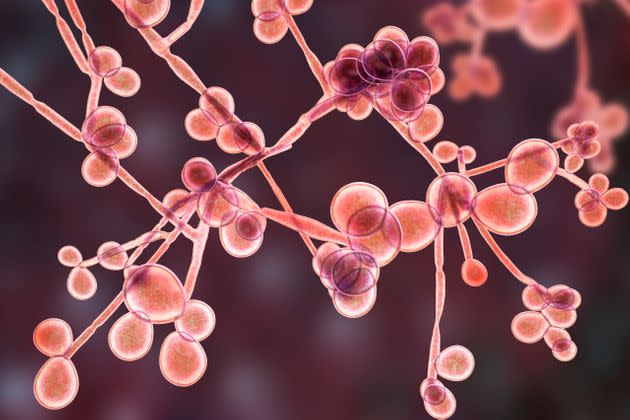Can You Get A Yeast Infection On Your Face From Your Coronavirus Mask?
A friend of a friend recently visited the dermatologist to treat some unusually irritated skin near her chin and jawline. The diagnosis: A yeast infection ― yes, on her face ― potentially caused by the face mask she’d been wearing during the coronavirus pandemic.
But is this diagnosis correct? Could this possibly be something we have to worry about?
Yes and no.
While a face mask can’t be the sole cause of a skin infection, the combination of summer heat, humidity and tight-fitting mask fabric could exacerbate underlying conditions that could worsen a fungal or bacterial infection.
A yeast infection, for example, is a fungal infection resulting from a yeast called candida.
Dermatologist Dr. Susan Massick explained: “We already have yeast on our skin. A yeast infection could occur in the right setting, such as a warm, moist environment, but is often related to another factor (diabetes, compromised immune system, recent course of antibiotics, poor hygiene) that allows the yeast to grow unchecked.”
To help you practice better hygiene habits this summer, we tapped Massick and other board-certified dermatologists to break down all the ways you can keep facial irritations and infections to a minimum this summer.
Types Of Fungal Infections That Can Occur On The Face
Fungi that appear on the face can tend to vary in appearance, and can also be found on different areas of the face.
For starters, Massick explained that tinea faciei (ringworm of the face) will appear on the skin as a red ring with a sharp border and central clearing, while perleche (usually from candida yeast) will typically crack the corners of the lips, potentially growing into red papules and larger red patches.

The most common form of fungal infection on the face is seborrheic dermatitis, a chronic condition exacerbated by yeast on the skin. It can be found where you have higher numbers of sebaceous glands. “On the face, it particularly affects the creases of the nose, the eyebrows...

 Yahoo Lifestyle
Yahoo Lifestyle 
